девы переведите 
Jacko doc Conrad Murray nailed
Damning ambulance report that could put Michael Jackson's doctor behind bars
WE reveal the dynamite documents prosecutors believe will put Michael Jackson's doctor behind bars.
They make up the official ambulance report that paramedics called to treat the stricken superstar filled out on the day he died.
SCROLL BELOW TO SEE DYNAMITE DOCUMENTS
The sensational evidence, published exclusively today by the News of the World, could be a hammer blow to the case of Dr Conrad Murray, charged with involuntary manslaughter over Jacko's death.
The bombshell Emergency Medical Service Report states:
Murray FAILED to inform paramedics that he had given the singer a dose of Propofol, the anaesthetic drug that coroners ruled killed the King Of Pop.
Jackson had already FLAT-LINED (no heart activity) by the time they arrived and after two rounds of heart revival drugs failed he was declared dead at the scene.
As senior medic there Murray nevertheless insisted Jacko be taken to hospital and DEMANDED a third round of drugs which also failed.
Insiders say the document also paves the way for Jackson's father Joe to launch a "wrongful death" lawsuit against Murray, who continues to practise in Houston, Texas.
A Jackson family friend told us last night: "This is the clearest suggestion yet that Murray misled the paramedics. Why didn't he tell them about the Propofol? We are sick at what this report indicates."
The report shows paramedics quizzed Murray about "meds" (medicines) after racing to a bedroom at Jackson's Hollywood Hills home at 12.27pm on June 25 last year.
Murray told them Jacko was exhausted after a sleepless night and he had given him only the sedative Lorazepam and fluids to rehydrate him.
This contradicts what Murray told police and the findings of the autopsy.
Detectives say the doctor also administered Valium, Midazolam, Flumanzenil and Propofol overnight. The coroner found Jackson's blood contained Lorazepam as well as other anxiety sedatives Lidocaine, Diazepam, Nordiazepam and Midazolam, plus Ephedrine which can be used for sleep disorders and Propofol. The medics left the Controlled Meds section of the form blank indicating that Murray, who was paid £100,000 a month by Jacko, had not informed them about the many substances he had pumped into him.
The explosive document also gives a detailed insight into the desperate battle ambulance staff put up to bring Jackson back to life. The medics rushed past the star's children Prince, 13, Paris, 11, and Blanket, seven, into a bedroom six minutes after bodyguard Alberto Alvarez called emergency services saying Jackson was not breathing. He had suffered a cardiac arrest.
The medics noted Murray performing CPR as Jacko lay on the floor with an intravenous (IV) drip in his left LEG. In the comments section, one wrote: "50-year-old found supine on floor, cpr in progress via PMD Murray, no visible new trauma, good lung sounds faltering, intubation, IV in place lft leg."
Their initial examination indicated Jackson was already dead.
In seconds they had hooked him to an oximeter which measures the oxygen level in blood. Normal readings range between 93 and 100 per cent. Jackson's was zero.
They noted in the Vitals section that at 12.29pm Jacko had no blood pressure, pulse or breath and his pupils were dilated. There was some "pulseless electric activity" meaning the heart muscle was still flickering even though the singer was dead.
After five minutes of CPR and discussions with Murray, medics attempted to restart Jacko's heart with a combination of heart stimulant epinephrine and a drug which keeps heart valves open called atropine. The drugs, 1mg of each, were given through the IV line Murray had put in the star's left leg.
The result of the injections are seen in the Initial Rhythm Chart part of the documents. It shows the fluids rocked the heart muscle but a few seconds later the shaking stopped.
The team also attached a bag valve mask (BVM) hooked up to a 7.5cm tube run down his throat into his lungs in a bid to kick-start his breathing, but it had no effect.
The report's Code Summary Figures show the bag briefly raised the carbon dioxide (CO2) levels in his body, from 20 to 26, but he was not breathing. Normal levels are 35 to 45.
The bag was discarded on the bed as we revealed last July when we published a photo of the death scene.
After four minutes the medics repeated the 1mg shots of epinephrine and atropine. The Rhythm Chart showed the heart muscle again shook but Jackson remained flat-lined.
American paramedics often adopt a "two rounds and you're out" approach meaning a patient is dead if he has not responded after a double dose of the powerful drugs.
In addition, most doctors view a carbon dioxide (C02) figure as low as 10 as the point beyond which there is no chance of recovery. Jacko's had now sunk to just six.
Firing
Last night Califiornia paramedic Kevin James told us: "The charts and readings indicate this is a dead man's heart. The fact his C02 levels were so low indicate Jackson had been down and out for a while, perhaps tens of minutes or even longer."
At 12.58pm the paramedics made a final desperate effort to bring Jacko back, firing 50mg of bicarbonate into the jugular vein in his neck. The injection neutralizes harmful acids after a cardiac arrest. After this got no reaction they contacted bosses at UCLA hospital with their results and were told to stop treatment.
But Murray interrupted the call, insisting Jackson could be saved, despite all the readings. Eight minutes after his last jab, Jackson was rushed on the three-mile journey to UCLA.
In the ambulance, Murray assumed control as the most senior medic. He ordered a THIRD round of the epinephrine/atropine combination and a second shot of bicarbonate.
But the charts confirmed Jackson remained flat-lined and all vital signs were out when he arrived at the hospital at 1.13pm. He was finally declared dead at 2.26pm.
It was a couple of hours later that the medics filed the bombshell emergency service report, attaching the graphics and charts of their efforts. It will be key evidence in both Murray's trial and any "wrongful death" lawsuit brought by Jackson's father.
Last night News of the World GP Dr Hilary Jones said: "If the report is correct, it is clear Jackson was dead before the paramedics arrived.
"He was flat-lining and there was no response to the resuscitation medicine. It's extraordinary that Dr Murray apparently didn't tell the paramedics exactly what drugs Jackson had been on hours earlier.
"It was his absolute duty to do so and the report suggests he failed.
"In my opinion Jackson died from respiratory depression - he was so deeply asleep he stopped breathing.
"And there was no justification for him using Propofol. It's just so bizarre that he should be using that to help him sleep.
"Dr Murray is nothing but a medically-qualified drug pusher."
james.desborough@notw.co.uk
Record's six vital pointers
HERE News of the World doctor Hilary Jones explains key parts of the ambulance report.

1) JACKSON is lying "supine" on the floor of his home in LA when the paramedics arrive. Dr Murray is conducting CPR (cardio-pulmonary resuscitation) on his patient. The paramedics intubate Jackson, reporting "good lung sounds". This is a simple check to make sure the tube has gone down the patient's windpipe and not into the stomach.
They record that an intravenous drip is already in place in the patient's left leg, put there by Murray.
It is unusual that it should be in his leg and not his arm. We can only speculate that Murray couldn't find a vein in his arm because of long-term drug abuse, or that he had been dead for some time and his veins had retreated into his body.
Capnography, or the build-up of carbon dioxide in the body, is recorded initially at 16 parts per unit, then 26 when he is transported. This shows he is not breathing and therefore not expelling the gasses and they are building up inside him.

2) JACKSON'S Vital Signs - blood pressure, pulse and respiration - are measured twice by the paramedics, at 1pm and eleven minutes later. The chart shows "zero" in each case, meaning he was technically dead.
3) THE record shows the results of an electrocardiogram measurement. He would have had electrodes placed on his chest, arms and legs to measure heartbeat.
Three doses of drugs are given intravenously: 1mg of epinephrine, an adrenalin-like drug used to try to stimulate the heart.
The result is "N" for negative. They then try atropine. This blocks the nerves, taking the body's brake off the heart to allow it to beat as much as it likes. Again, it is a negative result.
Finally they try sodium bicarbonate.
When there is no circulation, the blood becomes acidic as a by-product of the build-up of CO2. By introducing sodium bicarb you hope to return the blood to alkaline and help restart the heart.
It looks like they tried 50cc, about a cupful. Again the affect was recorded as negative. All these measurements have ASY next to them for asystole - no heartbeat. The treatments simply weren't working.

4) THE patient does not respond to two rounds of RX/TX (treatment) so the hospital advises stopping. But Murray assumes responsibility and asks for Jackson to be transferred to the ER. There is a third round of treatment en route. At this point, his blood CO2 level is 26 parts per unit so his body is continuing to build up CO2.

5) THE "time left scene" and "time at hospital" indicators show the journey to UCLA took just six minutes.
6) ANY time the body is moved or given a shock the electrocardiogram flutters. But we can clearly see from the charts that Jackson was flat-lining.
http://www.newsoftheworld.co.uk/news/76 … -bars.html
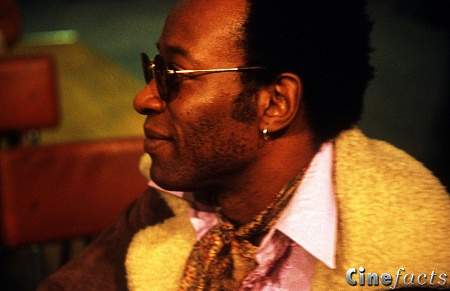
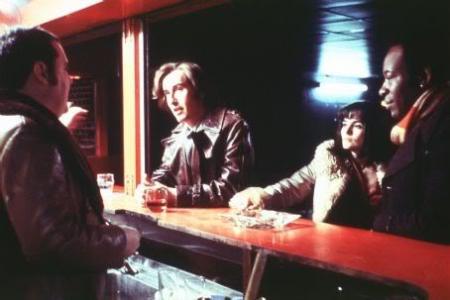
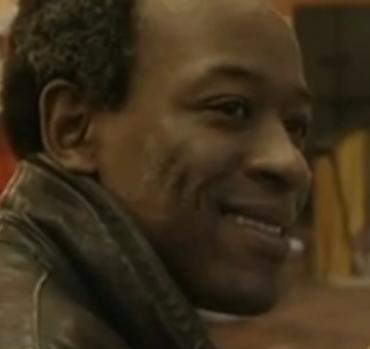
 ) Существование этого актера, фактически, не известно публике. Он появляется в титрах фильма. Мог Майкл "нанять" неизвестного актера на "иммитатора" доктора? Или он "украл" именя актера? (Это тайна)
) Существование этого актера, фактически, не известно публике. Он появляется в титрах фильма. Мог Майкл "нанять" неизвестного актера на "иммитатора" доктора? Или он "украл" именя актера? (Это тайна)



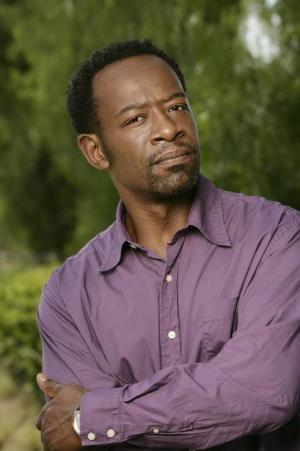
 )
)
 Сравните мочку уха с Мюррем на 4 странице...
Сравните мочку уха с Мюррем на 4 странице...

 )
)


 Я и пыталась всем доказать, что это не Мюррей - достаточно было сравнить мочки ушей. Ну теперь уж стопроцентное фото-свидетельство есть.
Я и пыталась всем доказать, что это не Мюррей - достаточно было сравнить мочки ушей. Ну теперь уж стопроцентное фото-свидетельство есть.  Надеюсь все, кто сомневался, теперь отбросят эту версию.
Надеюсь все, кто сомневался, теперь отбросят эту версию.

 Все эти дети, которые получают на руки рецепты на наркотики... все это однажды будет прекращено...
Все эти дети, которые получают на руки рецепты на наркотики... все это однажды будет прекращено... Я попросила предоставить мне возможность для его изложения. Но вещи обстоят таким образом, что сейчас еще нет обвинения... поэтому, пока это не станет реальным и не будет оформлено в книге, я просто жду и смотрю.
Я попросила предоставить мне возможность для его изложения. Но вещи обстоят таким образом, что сейчас еще нет обвинения... поэтому, пока это не станет реальным и не будет оформлено в книге, я просто жду и смотрю. ой, мамочки, солнышко, пожалей! я и это до конца не осилила просмотреть...
ой, мамочки, солнышко, пожалей! я и это до конца не осилила просмотреть...






 ) так не таскать же Джексона в больницу, дабы избежать огласки..
) так не таскать же Джексона в больницу, дабы избежать огласки..


 чтобы
чтобы 

 а время прибытия 12:26....
а время прибытия 12:26.... странно, что эти бумажки, подтверждающие их правоту, купить не захотели........
странно, что эти бумажки, подтверждающие их правоту, купить не захотели........
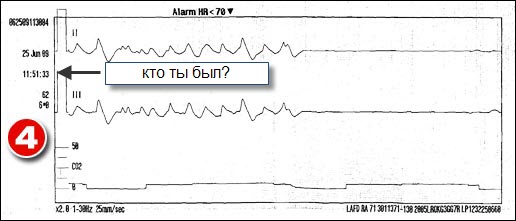
 (
(